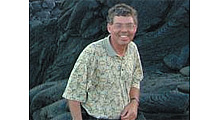WLIG-LP Waiver Could Open More Spectrum for LPTV

Doug Lung
The FCC earlier this month granted WLNY-TV's request for a waiver of Section 74.709 of the FCC rules. As I reported in my story N.Y. LPTV Faces Problem With Digital Flash-Cut Proposal, WLNY-TV, Inc. filed an application and an associated waiver request “to flashcut from analog channel 17 to digital channel 17” for low power TV (LPTV) station WLIG-LP in Plainview, NY. Section 74.709 requires that a low power TV or TV translator station application will not be accepted if it specifies a channel that is one channel above or below one of the land mobile assignments and its field strength at the land mobile protector contour exceeds 76 dBu. WLIG-LP is located within the land mobile protection contour.
WLNY noted that WLIG-LP has been operating on channel 17 since 2005 with no interference complaints by any users of adjacent channel 16 spectrum. In engineering submitted with the request for waiver WLNY showed that transition to digital with comparable facilities using the full service emission mask would actually provide “significantly more interference protection” to channel 16 than the current analog channel 17 operation.
The Media Bureau and Public Safety/Homeland Security Bureau Deputy Chiefs found, overall, “that the public interest will be served by grant of the waiver request and the associated application. WLNY concludes that granting its proposal 'will enhance the interference protection for the channel 16 land mobile service [and therefore] has no downside and is risk-free for all parties.' WLNY argues that 'if interference ever occurs, WLIG-LP, as a secondary service, will be required to eliminate the interference or cease operations' and that 'FCC can condition the WLIG-LP construction permit.' According to WLNY, '[t]here are no countervailing downsides associated with a grant of [its] application.' As the LPTV stations are required to convert to digital broadcasting by September 1, 2015, grant of this application will give an opportunity for this station to start digital broadcasting which in turn will provide a good quality signal to the public compared to analog broadcasting. Therefore, we find it in the public interest to permit WLNY to flashcut from analog channel 17 to digital channel 17.”
While the Order is limited to WLIG-LP's operation, the engineering work done by WLNY and accepted by the FCC in the waiver request could possibly be used by other LPTV operators looking for displacement channels in or near markets where there are land-mobile operations on channels 14-20. These markets include Boston, Chicago, Cleveland, Dallas, Detroit, Houston, Los Angeles, Miami, New York, Philadelphia, Pittsburgh, San Francisco, and Washington D.C. Opening these adjacent channels to use by LPTV and TV translator stations might slightly reduce the impact of the repacking on LPTV stations in these markets where spectrum is scarce. Of course, there is competition for this spectrum for use by white space devices (as the FCC has proposed) and wireless microphones. Even other LPTV/TV translator licensees can demonstrate no interference to adjacent channel land mobile operations they may still not get access to this spectrum.
Get the TV Tech Newsletter
The professional video industry's #1 source for news, trends and product and tech information. Sign up below.

Doug Lung is one of America's foremost authorities on broadcast RF technology. As vice president of Broadcast Technology for NBCUniversal Local, H. Douglas Lung leads NBC and Telemundo-owned stations’ RF and transmission affairs, including microwave, radars, satellite uplinks, and FCC technical filings. Beginning his career in 1976 at KSCI in Los Angeles, Lung has nearly 50 years of experience in broadcast television engineering. Beginning in 1985, he led the engineering department for what was to become the Telemundo network and station group, assisting in the design, construction and installation of the company’s broadcast and cable facilities. Other projects include work on the launch of Hawaii’s first UHF TV station, the rollout and testing of the ATSC mobile-handheld standard, and software development related to the incentive auction TV spectrum repack. A longtime columnist for TV Technology, Doug is also a regular contributor to IEEE Broadcast Technology. He is the recipient of the 2023 NAB Television Engineering Award. He also received a Tech Leadership Award from TV Tech publisher Future plc in 2021 and is a member of the IEEE Broadcast Technology Society and the Society of Broadcast Engineers.
